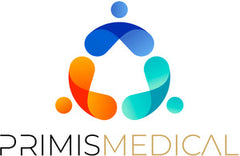Q: What is an N95 mask?
A: An N95 mask is a polyester-based filtering facepiece respirator. It is regulated by the National Institute for Occupational Safety and Health (NIOSH). The “N” stands for “Non-Oil,” meaning that it offers protection against solid and non-oil-based particles. The “95” refers to the efficiency rating; in the case of N95, masks should be filtering at least 95% of particles.
Q: Do N95 masks have ear loops or elastic headbands?
A: NIOSH-certified N95 masks have elastic headbands. This is important because the elastic headbands ensure a tighter fit and seal, creating a barrier between the mask and face. If your N95 has ear loops, it is not an N95!
Q: What is a KN95 mask?
A: While N95 masks are the United States standard for respirator masks, KN95 masks are the Chinese standard. The masks are considered to be “equivalent” and “can be expected to function very similarly to one another, based on the performance requirements stated in the standards and confirmed during conformity,” according to manufacturer 3M. Here is a list of technical differences.
However, KN95 masks are treated differently than respirators in the U.S. While they filtrate better than a surgical, Level 3 mask, they are not considered a respirator and therefore do not need to meet the same FDA standards as respirators. Many will have ear loops vs. elastic headbands and do not need to be fit tested. As a result, you will not see KN95 masks listed on FDA or CDC documentation.
Q: How do I know that my N95 respirator is genuine?
A: A recent Wall Street Journal article reported that many imported N95 masks do not meet the U.S. specifications, and that one tested “filtered out as little as 35% of particles.” N95 masks are evaluated, tested, and approved by NIOSH so look for the NIOSH stamp on the mask. Also, N95 masks are attached to the face via a headband, not ear loops as in a surgical mask. It is important you purchase your PPE, including masks, from a reputable distributor.
The CDC maintains a list of approved manufacturers, as well as photo examples of counterfeit masks.
According to the CDC, there are several signs that an N95 respirator may be counterfeit. They include:
• No markings at all
• No approval number
• No NIOSH stamp
• “NIOSH” spelled incorrectly
• Presence of decorative fabric or other decorative add-ons (e.g., sequins)
• Claims for the of approval for children
• Presence of ear loops instead of headbands
Q: How do I know if my KN95 mask is genuine?
A: First, it is important you purchase your PPE, including masks, from a reputable distributer. Primis Medical’s regulatory team has investigated more than 100 vendors and is focused on following the FDA guidelines before we purchase and sell a KN95 mask.
Secondly, to validate a KN95 mask, the manufacturer needs to ensure accurate labeling and testing by an equivalent to NIOSH, which is usually a Chinese regulatory agency.
KN95 masks need to follow the FDA rules regulating imported, non-NIOSH-approved disposable filtering facepieces and will need to be listed on the FDA’s Appendix A or Exhibit 1 lists. Masks do not.






